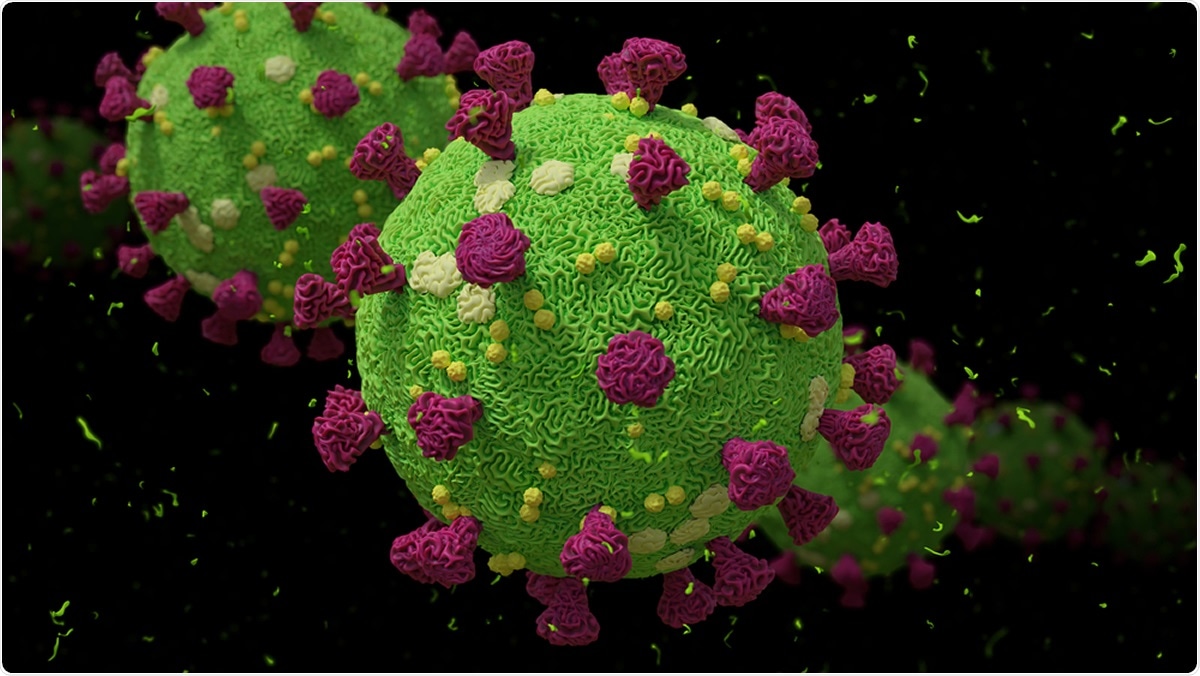The severe acute respiratory syndrome coronavirus 2 (SARS-CoV-2) has caused more than 3.42 million deaths worldwide. Despite the fact that there are vaccines for SARS-CoV-2, the emergence of new variants and the lack of adequate treatments have encouraged the search for new ways to combat this disease more effectively.

Review: Metal Complexes as Antiviral Agents for SARS-CoV-2. Image Credit: Dotted Yeti / Shutterstock
Various attempts are being made to adapt organic chemicals for use as antiviral therapy and apply metal complexes as potential agents against the SARS-CoV-2. A new mini-review in the journal ChemBioChem by researchers Johannes Karges and Seth M. Cohen of the University of California San Diego details these metal complexes and their proposed mechanisms of action against SARS-CoV-2.
Vaccinations which have been made available to the public have been able to provide prophylactic protection for healthy adults. However, they can be less effective for individuals with a compromised immune system or those with other underlying health conditions. Vaccine efficacy has also been challenged by the emergence of new viral variants, with recent research identifying the E484K mutation in the receptor-binding domain of the spike protein shown to reduce vaccine effectiveness.
Recent work by Messori and Bergamini examined metal complexes for potential antiviral activity, including those previously reported for COVID-19.
SARS-CoV-2 Life Cycle
The life cycle of this virus, in a very simplistic view, consists of the receptor-binding domain of the spike protein binding at the cell surface protein, angiotensin-converting enzyme II. Due to the host cell transmembrane serine protease 2, expressed in the human respiratory tract, the spike protein is then able to be primed, and the virus enters the cell through clathrin-mediated endocytosis. After the uptake of the virus, the viral genome is then released into the host cell cytoplasm and translated, whereby polyproteins pp1a and pp1ab are generated and sixteen non-structural proteins are co-translationally released.
Transmembrane serine protease 2 inhibitors, Camostat Mesylate and Nafamostat Mesylate are currently being researched through clinical trials to prevent viral cellular entry.
Metallocomplexes
A study by Ott et al. investigated gold complexes functionalized with N-heterocyclic carbene or alkynyl ligands Au1-Au5 and Auranofin as inhibitors of angiotensin-converting enzyme II (ACE2). They were able to quantify the ability of these inhibitors to prevent the binding of the spike protein receptor-binding domain to the ACE2 receptor.
The significance of this lies in the importance of the role of the ACE2. ACE2 is a Zn-dependent metalloenzyme attached to cell membranes of cells found in areas such as lungs, arteries, kidneys, intestines, and the heart. This transmembrane protein has been identified as a cellular entry receptor for the coronavirus. Due to this, the blocking of this interaction with the spike protein could potentially block the entry of the coronavirus into host cells.
This theory is reinforced by a clinical study that treated coronavirus patients suffering from hypertension with ACE2 inhibitors and angiotensin II receptor blockers and found that the mortality rate decreased from 9.8% to 3.7%.
Ott et al. were also able to test the Au complexes as inhibitors for the cysteine protease PLpro enzyme, which along with 3CLpro, are essential for the SARS-CoV-2 virus. While some Au complexes were found not to cause significant inhibition of PLpro enzymes, others Au complexes, such as Au1, Au2 and Au5 did demonstrate some inhibition. This lack of consensus may be due to some Au complexes having more of an affinity to bind to cysteine residues in metalloproteins, resulting in the ejection of metal ions from the coordination site.
Although metal complexes that have the most robust inhibitory activity were found to result in the highest amount of Zn ejection, previous studies have found that certain Au complexes, such as Au1, Au3, and Au5 have been found to be cytotoxic. This, in turn, may prevent their use for coronavirus therapeutics.
Auranofin
Auranofin has the ability to inhibit redox enzymes, the induction of endoplasmic reticulum stress, and the activation of the unfolded protein response in cells. These characteristics have been encouraged research into Auranofin as a SARS-CoV-2 therapeutic, which has also been suggested by Marzo and Messori.
This could be significant as coronavirus-infected cells have been found to have an upregulated unfolded protein response, while endoplasmic reticulum stress is also involved in viral replication in coronaviruses.
To support this research, a study by Rothan and Kumar have illustrated a treatment with Auranofin at low micromolar concentrations which resulted in a 95% reduction of the coronavirus after 48 hours in human cells.
With the bid to find a novel and effective approach to treating coronavirus, metal complexes have been highly researched for this purpose. From every angle of the life cycle of a virus, and specifically SARS-CoV-2, metal complexes that utilize gold have been investigated for ACE2 inhibition, as well as inhibiting PLpro and 3CLpro. Rhenium (I) tricarbonyl complexes have also been shown to work as inhibitors of 3CLpro and Bismuth (III) complexes have shown promise as replication inhibitors and, therefore, potential therapeutics for SARS-CoV-2.
The novel research into this area will be highly beneficial to coronavirus research and integral for global wellbeing, hopefully decreasing mortality rates worldwide.